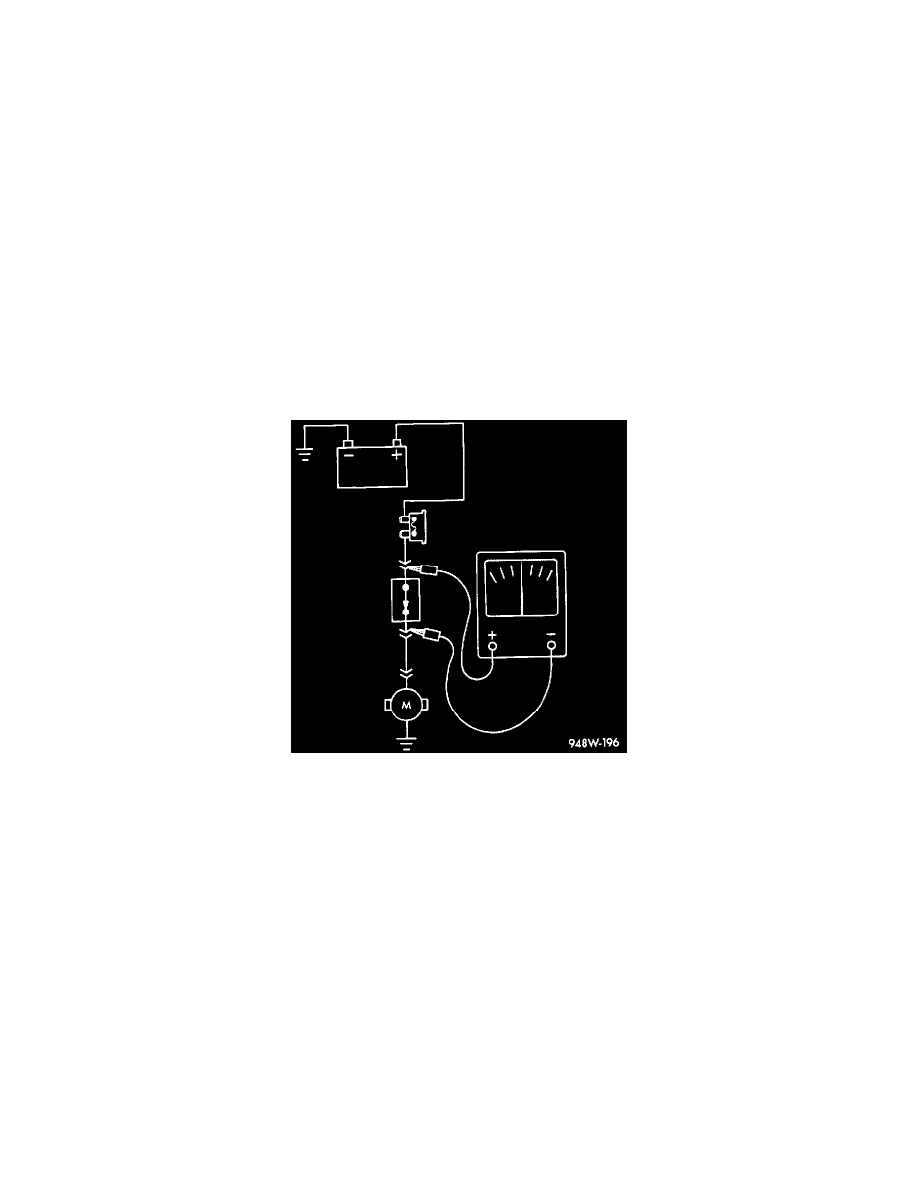Caravan V6-201 3.3L (1995)

Testing For A Short to Ground
1. Remove the fuse and disconnect all items involved with the fuse.
2. Connect a test light or a voltmeter across the terminals of the fuse.
3. Starting at the fuse block, wiggle the wiring harness about six to eight inches apart and watch the voltmeter/test lamp.
4. If the voltmeter registers voltage or the test lamp glows, there is a short to ground in that general area of the wiring harness.
TESTING FOR A SHORT TO GROUND ON FUSES POWERING SEVERAL LOADS
1. Refer to the wiring diagrams and disconnect or isolate all items on the fused circuit.
2. Replace the blown fuse.
3. Supply power to the fuse by turning ON the ignition switch or re-connecting the battery.
4. Start connecting the items in the fuse circuit one at a time. When the fuse blows the circuit with the short to ground has been isolated.
Testing For A Voltage Drop
Testing For Voltage Drop
1
Connect the positive lead of the voltmeter the side of the circuit closest to the battery.
2. Connect the other lead of the voltmeter to the other side of the switch or component.
3. Operate the item.
4. The voltmeter will show the difference in voltage between the two points.
Intermittent and Poor Connections
Most intermittent electrical problems are caused by faulty electrical connections or wiring. It is also possible for a sticking component or relay to cause a
problem. Before condemning a component or wiring assembly check the following items.
-
Connectors are fully seated
-
Spread terminals, or terminal push out
-
Terminals in the wiring assembly are fully seated into the connector/component and locked in position
-
Dirt or corrosion on the terminals. Any amount of corrosion or dirt could cause an intermittent problem
-
Damaged connector/component casing exposing the item to dirt and moisture
-
Wire insulation that has rubbed through causing a short to ground
-
Some or all of the wiring strands broken inside of the insulation covering.
-
Wiring broken inside of the insulation
